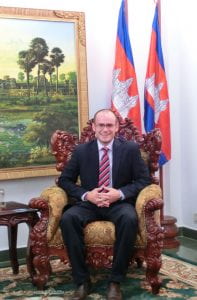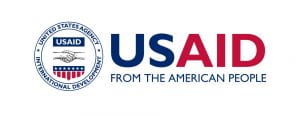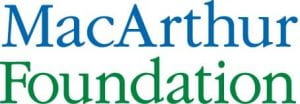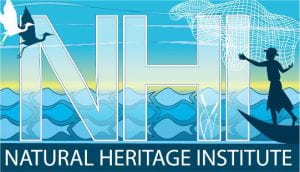Environmental and Water Resources Systems Analysis
Ongoing
1. Dashboard for Agricultural Water Use and Nutrient Management (DAWN)
The project’s objective is to create a predictive decision support Dashboard for Agricultural Water use and Nutrient management (DAWN) to sustain food and energy crop production in the Corn Belt of the United States. The goal is to link local land/water use practices to large-scale feedbacks in a credible and usable information delivery system for stakeholders. The project has four broad objectives:
- Proactively engage agricultural producers and water managers to collaboratively design, test and implement a dynamic evidence-based decision support system and a web-based information delivery system for effective use by diverse stakeholder communities.
- Build a coupled science modeling system not only to represent interactions among climate, agriculture, land/water use, and economic/environmental impacts, but also to transfer this holistic systems knowledge to effective decision support tools at stakeholder-relevant scales.
- Produce reliable forecasts to support agricultural and water managers’ real-time and mid range decisions as they navigate resource use, manage risks, and develop strategies to optimize crop productivity, profitability, and environmental quality.
- Integrate research and extension into experiential, transdisciplinary education to teach, train and inspire future leaders in agricultural water use and nutrient management.
The Wild Group is focused on contributing a water resources management modeling framework to the coupled science modeling system and decision support system.
Sponsor: U.S. Department of Agriculture
Completed
1. Damming the Mekong: Finding Sustainable Solutions to Food-Water-Energy Development Challenges in the Mekong River Basin

Dr. Wild visits the Ministry of Mines and Energy in Cambodia in 2016 to Participate in High-Level Briefings.
The Mekong River basin in Southeast Asia is undergoing intensive and pervasive hydropower dam development to satisfy the need for increased regional energy and income to support its rapidly growing population of 60 million people. (Most of this dam development is taking place in Cambodia and Laos). The Mekong’s 877 known species of fish are second in biodiversity only to the Amazon, providing 3.9-7 billion $USD/yr of income and food security, particularly for the most impoverished people. Irreversible decisions on the basin’s most potentially destructive planned dams are being made at a startling pace, with plans for severely impactful dams being finalized in real time. Given the strong likelihood that dams will be built, we sought to influence sustainable basin-wide decision-making and policy surrounding dams. Dr. Wild, in partnership with Proessor Reed and Professor Loucks, sought to address this urgent challenge by developing a decision support framework and deploying it in partnership with National Governments of Lower Mekong Basin countries to identify alternative dam siting (location), design, and operating policy (SDO) options (i.e., alternatives to dams proposed by investors and developers) that could generate substantial hydropower while minimizing critical impacts on ecosystems. Dr. Wild joined an ongoing project managed by the Natural Heritage Institute (NHI) titled “A Climate Resilient Mekong: Maintaining the Flows that Nourish Life” to conduct this work. While there were multiple potential case studies to which Dr. Wild could have meaningfully contributed as part of NHI’s broader Mekong basin-wide agenda, he focused his effort on the Sambor Dam effort in Cambodia to maximize impact.
Sponsor: Cornell University Atkinson Center for a Sustainable Future (ACSF)
2. A Climate Resilient Mekong: Maintaining the Flows that Nourish Life
The Mekong River is the world’s most productive freshwater fishery and the second most bio-diverse river after the Amazon. This unique and productive ecosystem is dependent on the rich sediment and nutrients carried by the river. Two decades ago, the Mekong River ran unimpeded from the Tibetan Plateau to the Mekong delta into the South China Sea. Today, it is poised on the brink of massive hydropower development. Nearly 50 dams are already constructed, including seven in the Chinese headwaters, while plans for up to 100 additional dam construction projects are under way. In the Lower Mekong Basin (LMB), where economic development is delayed by decades of conflict, this hydropower boom could potentially provide much needed revenues for people in Cambodia and Laos which are among the poorest countries in
the region. If construction is pursued without careful consideration of the downstream consequences, hydropower development could destroy this exceptionally productive river and undermine food
security.
The Climate Resilient Mekong project examined the environmental impacts caused by hydropower development. The planned dams threaten to block the natural sediment and nutrient flows necessary to maintain the wetland, delta and river habitats that support both agriculture and aquatic productivity. They also threaten to impede the regular fish migration along the river, which is essential for 67 percent of the capture fisheries. As currently planned, 75 percent of the pre-dam sediments and nutrients will no longer reach the Tonle Sap Lake in Cambodia, which produces more fish than any lake in the world. Nor will these vital nutrients reach the Mekong Delta in Vietnam, which is the ‘rice bowl’ of Southeast Asia providing food and livelihoods to nearly 18 million people. Additionally, the adverse effects will be greatly amplified by sea level rise as a consequence of global climate change. Yet, the sediment and nutrient flows can be maintained, at least in part, by informed choices in the location, design and operation of these dams. Better informed choices will also help those countries vulnerable to the impacts of climate change maintain their adaptive ability.
This project helped LMB national government agencies improve planning and decision-making on hydropower development by increasing their understanding of the downstream impacts of alterations in sediment and nutrient flows. Specifically, the project assisted these agencies to advance knowledge on:
- The impacts of sediment and nutrient depletion on the biological productivity of the Tonle Sap Lake; and
- Options for the location, design and operation of the dams that can minimize these impacts and help sustain the future productivity of the basin.
Sponsors: U.S. Agency for International Development (USAID), MacArthur Foundation, and the Margaret A. Cargill Foundation, via Natural Heritage Institute.




